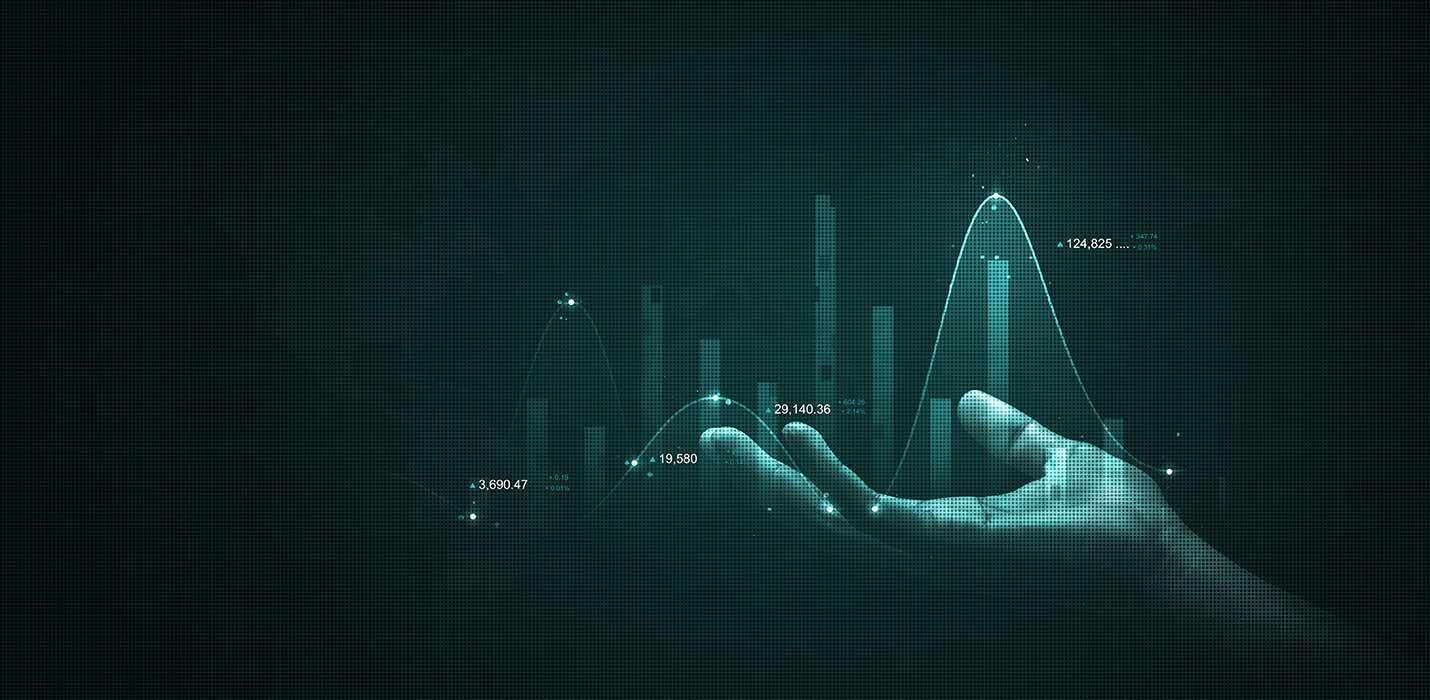Introduction
Importance of Website Security
Website security is important in order to secure information to prevent bad deeds by other people who plan to take advantage of it, to keep the trust of the customers, and to save the image of the company.
Today, more information is disclosed on the internet, and even the least violation of the perimeter can have critical consequences for businesses and users.
Security is an investment that minimizes risks, avoids financial losses, and ensures compliance with regulatory and professional benchmarks for data security.
Current Threat Landscape
The threats from the cyber environment are dynamic; in this context, the attackers employ sophisticated methods to breach website vulnerabilities.
Ransomware attacks, phishing, malware, and DDoS are some of the most common threats, more relevant than in the previous year, affecting websites of all sorts.
Understanding these trends is very important to develop an effective security plan.
Knowledge of current threats enables businesses to take preventive measures and develop strategies against and for the prevention of such attacks.
Common Security Challenges
While using a website, owners encounter several security issues, ranging from managing its software updates to preventing unauthorized access.
Sometimes the problem is that resources are limited, there is no specialist or the necessary equipment, or the outdated technology is lacking.
Maintaining a full-proof security system might be quite complex, but playing absolutely safe is very crucial in order to protect data.
Meeting these challenges is possible only when a definite plan has been developed, audits performed, and appropriate security measures integrated into the business plan.
Foundation of Website Security
SSL Certificates
SSL certificates are important, major components of web security that ensure data provided by users and the server is protected from third-party interception.
This encryption saves data such as usernames and passwords and all financial information from unauthorized persons.
They also increase the visibility of the website in search engine results ranking and increase the confidence of users because browsers show a lock icon where the web address is located.
Types and benefits
The different categories of the SSL certificates are the domain validation (DV), the organization validation (OV), the extended validation (EV).
Each has an inherent level of security, with EV having the greatest level of security.
Advantages include data protection, increased user confidence through graphic representations, improved search visibility, and compliance with industry best practices; therefore, SSL should be used for websites in organizations that require secure information.
Implementation
Basically, ensuring the use of SSL requires buying a certificate from a CA and installing the given certificate to encrypt the connections used for https.
This also makes it possible that all the site pages and resources being implemented are optimally secured.
Redirects HTTP to HTTPS and updates internal links are essential actions, followed by checking to ensure there are no issues with “mixed content.”
Verification
It checks that your SSL certificate is properly installed and working, which is particularly important if you’ve recently installed it.
Various online SSL checkers shall confirm the installation as well as determine various misconfigurations and vulnerabilities.
Browsers also show a padlock for properly verified SSL, and users can click on the icon for certificate information, which in turn increases user confidence knowing that the site they are dealing with is authentic and secure.
Secure hosting
Website security is one of the most significant challenges when creating and administering a site, with one of its components being secure hosting, or safe from strikes by hackers.
High-availability client hosting services have good physical security measures, firewalls, regularly scheduled backups, and support for encryption.
Secure hosting ensures that websites minimize intrusion, server hacking, or crashes that may in turn affect the performance or reputation of the site.
Hosting provider selection
Therefore, choosing a reliable hosting provider for securing personal and important business data involves determining reliability, security features, and support services.
Ensure they have a good reputation, good policies on data protection, and the availability of round-the-clock tech support.
Check what others have to say, where the server is located, and whether or not the provider follows common protocols to ensure that the website and data are secure.
Because choosing a hosting provider is vital to both security and continuously running websites.
Security features to look for
If you want to ensure that your site is secure, then you need to look at those aspects of your hosting package, such as firewalls, malware scanning, regular backups, and DDoS protection.
More especially, access controls and multi-factor authentication are also useful in increasing site security.
A good hosting service provider should monitor your site, help you regularly update the security, and have enough security protocols to prevent any form of attack on your site.
Essential Security Measures
Authentication Security
Strong Password Policies
Password policies that facilitate the selection of very strong passwords reduce unauthorized access greatly.
Select a strong password, make the password with different characters, always change the passwords frequently, and do not repeat them on different accounts.
A strong password practice minimizes the vulnerability of a system being breached due to weak passwords, hence limiting easy access by attackers.
Two-Factor Authentication
Multi-factor authentication (MFA) is just a second factor in the form of code or generated by a device like a smartphone or tablet.
This measure reduces the risks arising from stolen passwords because to login, one requires the password plus the second factor, which makes accounts more secure.
User Access Management
User access management deals with what users can or cannot do on your site or which part of the site they can have access to.
To minimize internal threats, implement permissions according to the roles and restrict access to the information.
The security policy also involves the periodic review and update of users access privileges so that only users who should be allowed to access certain information should do so, as should some functions.
Malware Protection
Regular scanning
Scanning is a daily activity that gets rid of malware before it can affect a computer. One of the great features of automated tools is that these tools can scan files, databases, and directories on servers and will send notifications of an abnormal occurrence.
Mutual scheduling of several scan sessions is effective in applying timely threat detection in order to protect the website from subsequent breaks and unauthorized modifications.
Prevention methods
Protection from malware requires firewalling, constant observation of plugins, and installation of updates for existing programs and applications.
Restricting the file upload options, using secure coding standards, and employing reputable security plugins lowers the risk of getting your website affected.
Anticipatory measures make the risks much lower, making it easier to prevent malware from finding its way into your website.
Cleanup procedures
Even when malware is present, it has to be removed as soon as possible to lessen the impact. Back up data, recognize files with viruses, and remove or isolate viruses.
Perform the removal through security tools and change all points of access. Substantial cleanup brings back security and sustains user confidence.
Firewall Implementation
Types of firewalls
Firewalls are of different generations, generation one being the network firewalls, generation two being the application firewalls, and the third generation being the cloud firewalls.
Network firewalls prevent unauthorized access to network resources, while application firewalls are used to monitor certain Web traffic.
The use of firewalls provided on the cloud is effective in the sense that they are easily scalable and useful for sites that receive a great deal of use, data, and traffic.
Configuration best practices
Another important requirement is that the firewall configuration must be set correctly. To allow only the required traffic, BLOCKED_IPS must be set and be updated from time to time.
Specific rules used for websites reduce vulnerability to threats while only permitting valid requests within a website's firewall.
Monitoring
This is because monitoring of firewall activity allows the probing out of any malicious activity almost immediately. Daily scanning of firewall logs for activity that is malicious or an increase of unusual traffic, which is a sign of an attack. It means that the active monitoring also allows for a fast response in case of threats while you can change firewalls’ settings and prevent breaches.
Data Protection
Backup strategies
Daily and automated backup helps to preserve data from cyber incursions or technical glitches. Store backup offsite and make multiple copies; the action should help to restore data quickly.
Well-run backups should be tested from time to time to ensure that they will indeed provide the backup that is required in the event of an important data crisis.
Encryption methods
Encryption protects information by encoding it with symbols that are likely to be understood only by the holder of a decryption code.
Data should also be encrypted using algorithms such as Advanced Encryption System 256 (AES-256) for storage as well as for transit.
Data encryption requires enabling the safe collection, storage, transfer, sharing from producers to consumers, and management of data securely in its life cycle.
Data handling policies
Having policies on data handling results in secure ways of processing and storing.
Create clear policies that cover how data is collected, used, and disposed of, ensuring privacy and protection.
Educating employees about these policies helps prevent accidental data leaks, leading to better data protection awareness within the organization.
Advanced Security Features
DDoS protection
DDoS protection protects websites against threats of distributed denial-of-service attacks that overload servers, thus creating inconveniences. DDoS protection targets and eliminates wrong traffic with the help of traffic filtration, rate limits, and CDN services. These measures help to guarantee that a site is available and can remain so despite the scale of an attack attempt.
Bot protection
Bot protection separates users from bots that may crawl and perform potentially undesirable operations.
Services such as CAPTCHA, behavioural analysis, or IP rate limiting prevent such challenges, maintaining a site’s functionality and the user experience.
The definition of bot protection highlights that it helps to prevent data stealing, sending spam, and bots’ attacks.
File integrity monitoring
Various file integrity monitoring (FIM) solutions are designed to identify file modification in real time so that administrators will be prompted for further action regarding possible breaches.
All FIM tools constantly search for changes in important files and system settings, generating notifications of such changes.
This ensures that any malicious change is detected early and appropriate action is taken to restore the data to its original state.
Security headers
Security headers increase the protection by telling the browser how to handle the website’s data.
Simple security headers like the Content Security Policy (CSP) and HTTP Strict Transport Security (HSTS) help protect against attacks like cross-site scripting and man-in-the-middle attacks.
Security headers increase the protection against typical web application vulnerabilities when deployed.
Regular Maintenance
Update protocols
It's important to always have the latest updates to stay safer from new threats from hackers.
Establish a checklist for frequent updates of the various software, plugins, and systems where security features should be updated with the latest patch.
Switch to automatic updates wherever possible, and set periods where updates are run to test that everything is working as it should and minimize your system’s exposure to possible threats.
Security audits
Security audits give one the big picture of the security of the website.
Perform a security control check-up every once in a while to determine possible threats and check whether an organization meets proper standards.
Thus, audits show the points of growth in the current practices, allowing you to work on your security more efficiently and reduce the dangers.
Vulnerability assessments
Risk evaluations reveal opportunities that hackers can use to harm the organization’s website or data.
By employing vulnerability assessment tools, scan the internal structure of websites and applications as well as the different code structures for any vulnerabilities.
These assessments help plan future fixes, and remediation is done on high-risk bugs to prevent opportunistic exploits and to keep a site secure continuously while reducing potential risks.
Incident response planning
Policies typically include an incident response plan that details the steps to detect, control, and stop the situation from getting worse.
Identify specific responsibilities, determine communication procedures, and perform exercises on a periodic basis.
Cyber incidents are inevitable; thus, having an incident response plan in place reduces the impact, quickens the restoration process, and increases centralization in handling any cyber incident.
Security Tools and Solutions
Security plugins
Secrecy plugins provide basic features such as virus scanning, firewall connecting, and computer vulnerability checking.
Being relatively easy to install and update, plugins assist in the management of security for websites.
These tools can also prevent threats from attacking a site and keep site owners informed in real-time of defensive measures at their disposal.
Monitoring tools
Website monitoring tools are for monitoring the website usage and alerting if something odd or if the performance is poor.
There are real-time alerts in case of abnormal activity, which can be acted upon to reduce the risk of breaches.
Tools such as log analysis and intrusion detection add value to the company’s security by affording it great insight into website operation.
Analytics and reporting
The web security analytics and reporting tool gives information about the frequency at which an attempt was made to log on to the website, the threats blocked, and the closed vulnerabilities, among other issues.
Annual reporting allows for the evaluation of the security performance, potential problem detection, as well as the update of security measures to reflect the current threats and the organization’s requirements.
Compliance and Regulations
GDPR compliance
GDPR compliance makes sure that personal data is processed with transparency, with the user’s consent for the EU users.
Websites need to provide adequate website protection to the users’ personal information and data, provide users with access to their data and information, and promptly inform the users in case of a breach.
Staying GDPR compliant helps establish the trust of users to ensure their data is protected, which prevents them from receiving penalties.
Privacy policies
The policies cover how users’ information is gathered, utilized or controlled by a website.
They make users aware of their rights and help to clarify the practices being undertaken concerning data.
An easily understandable and well-written privacy policy is mandatory for every website to follow and helps an organization to build confidence in people regarding their personal information being safe on the site.
Cookie management
Privacy or cookie management enables users to control cookie settings with regard to privacy regulation policies like GDPR.
By adopting a cookie consent and dealing with the tracking preferences, one is able to meet the regulations.
Promising transparency within cookie consent ensures data ownership and privacy, thus meeting the legal standards.
Emergency Response
Disaster recovery
Disaster recovery plans describe procedures for regaining web site operations and data in case of a cyber attack or technical breakdown.
This is coupled with system backup, system recovery, and tests to confirm normalcy of the system operation.
An effective disaster recovery plan reduces interruption time and assists organizations to recover from the threats within the shortest time possible.
Breach response plan
A breach response plan provides information on the course of action to follow in case of a security breach.
It highlights roles, initial actions, and timeframes for response to the breaches. From this perspective, the structured approach helps to have a fast and well-coordinated response to increase the security level and avert threats to the company’s data.
Communication strategy
A communication plan is a strategy that helps you to assist stakeholders and users in case of a violation of cybersecurity.
Communication is trustful; extension of timely information demonstrates accountability.
Identify communication mode, message, and protocol for clarification and maintain integrated amicable communication to contain the reputation and restore confidence of the affected units/areas.
Conclusion
Security checklist
A security checklist helps make sure that necessary measures for security are followed and cover update, firewall, encryption, and audit.
This keeps website owners in a practice mode and allows them to fix issues that may emerge concerning security, apart from enhancing their protective measures against modern day cyber threats and risks.
Future security trends
It is crucial to keep up to date for future security threats in order to prepare an organization for such threats.
The specific trends include AI-enabled cyber threats, advancements in encryption protocols, and zero-trust solutions, which are gradually transforming the security landscape.
Tracking such occurrences assists companies in being ready for these shifts and includes stronger safety measures depending on the enhancements in the cyber threats.
Additional resources
Check out other online materials such as cybersecurity courses, cybersecurity blogs, and cybersecurity news magazines.
Most organizations also provide various security tools and frameworks or guides and measures to follow as well.
Remaining updated with resources keeps you strong and capable of enhancing the security of your website and protecting users’ data.



















 Social Media Marketing Agency
Social Media Marketing Agency  Wordpress Website Development
Wordpress Website Development  Ecommerce Website Development in Ahmedabad
Ecommerce Website Development in Ahmedabad  Ecommerce Website Development in Gurgaon
Ecommerce Website Development in Gurgaon 




